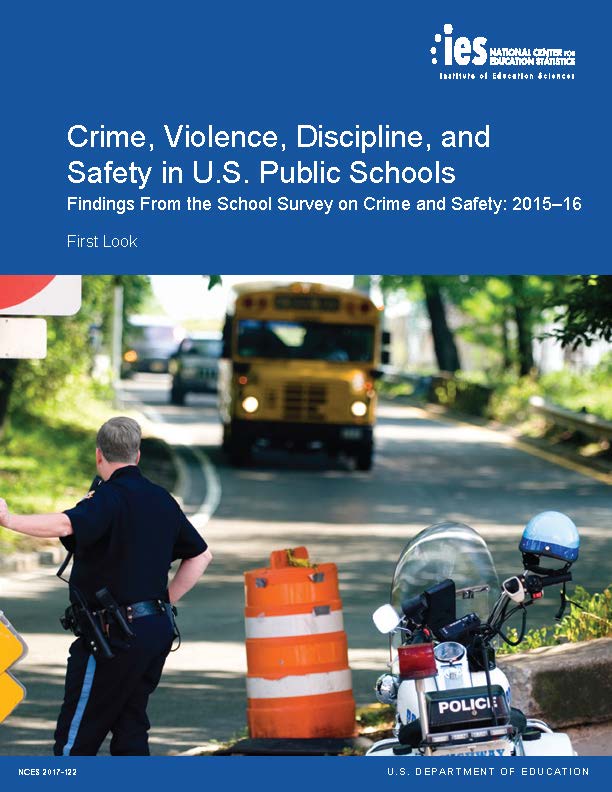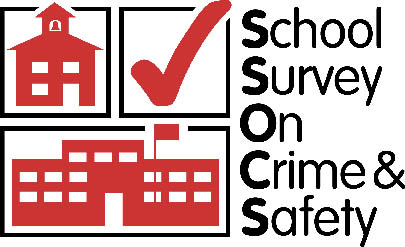By Rachel Hansen, NCES; and Melissa Diliberti and Jana Kemp, AIR
For more than 15 years, the National Center for Education Statistics has administered the School Survey on Crime and Safety (SSOCS) to provide timely, high-quality data on crime and safety in U.S. public schools. Information collected on SSOCS includes the frequency and nature of crime; disciplinary actions; crime prevention and the involvement of law enforcement; and challenges to reducing and preventing crime. Conducted with a nationally representative sample of public schools, the sixth, and most recent, administration of SSOCS took place during the 2015–16 school year. The first report highlighting key findings from that survey was released in 2017.
For the 2015–16 survey, we included new and expanded questions on several topics to address emerging policy issues and to identify common practices in school safety, including:
- School law enforcement, including questions on how schools involve sworn law enforcement officers in daily activities
 and whether schools outline the responsibilities of these officers at school. For instance, one new item asks whether law enforcement officers routinely wear a body camera, while another item asks if the school has a formalized policy defining officers’ use of firearms while at school;
and whether schools outline the responsibilities of these officers at school. For instance, one new item asks whether law enforcement officers routinely wear a body camera, while another item asks if the school has a formalized policy defining officers’ use of firearms while at school;
- Preventative measures used in public schools, including new questions on more recent security practices. For example, one new item asks schools to report whether they have a threat assessment team to identity students who might be a potential risk for violent or harmful behavior;
- Preparations for crisis situations, such as whether schools drill students on the use of evacuation, lockdown, and shelter-in-place procedures. Other new items ask whether schools have panic buttons that directly connect to law enforcement and whether they have classroom doors that can be locked from the inside;
- Student involvement in crime prevention, such as whether schools use peer mediation, student court, restorative circles, or social emotional learning training for students as part of a formal program intended to prevent or reduce violence; and
- Staff training in discipline policies and practices, including those related to bullying and cyberbullying or strategies for students displaying signs of mental health disorders.
While previous administrations of SSOCS have asked schools to report the number of hate crimes that occurred during a given school year, the 2015–16 questionnaire asked schools to also report the bias (e.g., national origin or ethnicity, gender identity, etc.) that may have motivated these hate crimes. For the first time, the SSOCS questionnaire also asked schools to report the number of arrests that occurred at school.

In addition to these new and expanded questions, SSOCS continues to collect detailed information on schools’ safety practices, the number and type of crime incidents (e.g., sexual assault, physical attack or fight) that occur at school, and the extent to which schools involve law enforcement, parents, and other community groups in their efforts to reduce and prevent crime. To allow for trend comparisons, many items included on SSOCS questionnaires have remained consistent between survey administrations.
Due to the sensitive nature of SSOCS data, researchers must apply for a
restricted-use license to access the SSOCS:2016 restricted-use data file. A
public-use data file, with some variables removed, was released in March of 2018. Public-use data files from previous SSOCS administrations are also available on the SSOCS
website and in
DataLab.